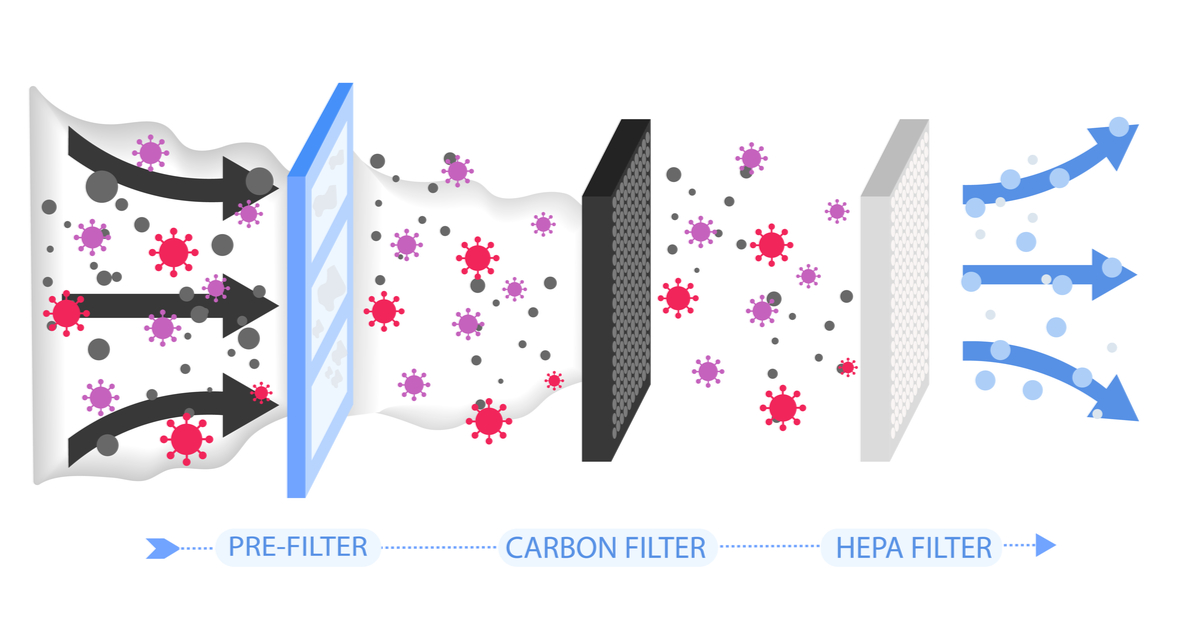Has the recent pandemic made you desperate for cleaner air? Or maybe living in the city has you inhaling enough brake dust to stop a mid-sized van with a well-timed sneeze. Whatever your reasons for seeking cleaner air in your home, we’re here to help. Read on to learn how to use an air purifier in your house!
Clean Air, Clear Eyes, Can’t Lose
If you’re anything like me, you love dinner after a movie. You also love knowing the air in your home is clean and safe from outside pollutants. The desire for cleaner air has spread from people living in crowded cities to those in small towns due to the uncertainty surrounding the current pandemic. That’s where air purifiers enter the picture.
Air purifiers should be a staple in any home these days. Not just for peace of mind but also for the wonderfully crisp and clean air they bring to any room they are placed. The difference in the air quality between my living room and bedroom since placing one there is staggering. If you’re considering joining the clean air revolution, you’ve come to the right blog! We’re breaking down the best practices for using an air purifier in your home (because where else would you use it?).
I’ve got my ION You, HEPA!
When deciding what air purifier to buy, you have to first understand the different kinds of air purifiers on the market. The common terms you will come across in your hunt for cleaner air are Ionic and High-Efficiency Particulate Air (HEPA). Both are designed to improve indoor air quality but differ in their approach.
The two types of ionic air purifiers are electrostatic precipitators and air ionizers. These are twenty-five cent words meaning filterless. Electrostatic precipitators have plates that must be washed or cleaned, making them beneficial from a cost standpoint. These units do a great job removing the most dangerous and hardest to detect particles from the air but are no longer sold to consumers.
In the place of electrostatic precipitators, air ionizers have become fashionable. Generally speaking, these purifiers emit a negative ion charge that attaches to airborne particles. When the charge connects to the particles, they become too heavy to stay afloat and fall to the ground or surrounding surfaces.
HEPA air purifiers use a different approach than Ion. HEPA models use mesh filters with fine holes that collect and trap dirty air particles. The finer the filter, the more particles trapped, and the more often the air is allowed to pass through the filter, the cleaner it will become. HEPA purifiers remove small allergens and particles in their filters and require more frequent cleaning and filter replacement.
Both kinds of air purifiers can be used to achieve better indoor air quality but there are several easy steps you can take to achieve peak performance from whatever unit you settle on.
Close Windows and Doors (FIX)
You might think that your new, cool air purifier is powerful enough to clean the world, but even industrial-sized units are limited to the indoors. Let the trees clean the outside air and let your purifier take care of your living space.
The best way to ensure you aren’t cleaning the outside air is to make sure all your doors and windows are closed. It seems simple, but many doors and windows don’t have an airtight seal. While it may be impossible to completely secure your room from outside air and pollution, having the doors and windows closed is the best way to start. And don’t forget to turn off the unit when letting in some fresh air or a cool breeze!
#NoFilter Doesn’t Apply Here

Save the natural look for your Instagram feed. A good air purifier needs a good filter, and a good filter needs a good cleaning. Your air quality will only be as good as your filter is clean. Luckily, most air purifiers have removable filters that can be easily cleaned as often as you see fit. Depending on your model, this may require several steps or replacements. Some newer purifiers opt for filters that can be cleaned by hand.
If your new air purifier allows, aim to clean the filter once a week for optimal performance. Always check the manufacturer’s recommendation when attempting to service your air filter. Be sure to check when a filter replacement is needed and check if they are covered by a warranty.
Location, Location, Location
Just like in real estate, the location of your air purifier matters. A misplaced air purifier is as good as a misplaced wallet. It may seem practical to hide your air purifier in the corner, but you would be doing yourself a disservice. An air purifier, like my uncle’s 30lb swordfish, should be put in a place of pride.
It’s important to remember that the key to placing an air purifier is airflow. The air intake is usually located in the front or side, so when choosing the perfect spot, it’s crucial to ensure that you do not have objects blocking it.
Most air purifiers are bulky and hard to place, but smaller units can be put in more compact places. Whether your unit is large or small, make sure to place your purifier where objects will not interfere with airflow. A good rule of thumb is to keep objects at least six inches away from your purifier.
Deciding what room to place your air purifier in is also key. It may seem best to place it in the center of your home, but if your unit is smaller, you may want to pick a more appropriately sized room to get the best performance.
I’m Your Biggest Fan! And Fan Size Should Coordinate With Your Room
Air purifiers have all sorts of specifications. These can include clean air delivery rate, room coverage, and air exchange rate, amongst others. Almost all of these specifications are related to the size of the room. Some units are made for the bedroom, while others are better suited for the family room. Even smaller units can be placed in bathrooms or small offices.
Whatever the case may be, the reason for placing a purifier in an appropriately sized room is to eliminate contaminants. This can sometimes be difficult even if you find the right-sized unit for your space due to objects like ottomans or dressers. The best thing to do first is clean up any unnecessary clutter but having a fan in the room also helps with airflow. Aim to have at least one fan on the opposite side of the room from the purifier to help channel the air toward the unit. Circulating the air will ensure that all the air in the room gets purified.
Don’t Touch That Dial—Leave the Purifier On
The best way to ensure the best air quality in your house or room is to keep your air purifier on at all times. In some cases, an air purifier will have an auto mode that will kick on as pollutants are detected. Others opt to run 24/7 to optimize air quality and keep pollutants from forming in the first place.
Keeping a unit plugged in all day is safe and does not lead to high energy bills. This is because almost all air purifiers are Energy Star certified and, even at the highest speed, consume little power.
Keeping your unit on all day on a low setting in a room that is sealed off is the best way to trap pollutants and odors and save money.
Less Worry About Smells
It’s easy to forget that cleaner air means fresher air. An often overlooked benefit of having an air purifier is the clean smell that comes along with constant use. Most people opt for placement in the bedroom or living area, but a case could be made for small units in the bathroom or where the animals sleep/eat.
A plug-in wall unit in your bathroom or mudroom will not only help with smell but also with mold. Most mold is hidden, and the spores are invisible, so having a unit in these areas can help protect you from sour scents and dangerous air molecules you would never notice otherwise.
Nab Yourself an Air Purifier
If you’ve made it this far, now is the time to pick out your unit and start breathing better!

Trackbacks/Pingbacks